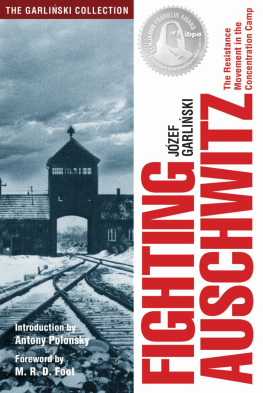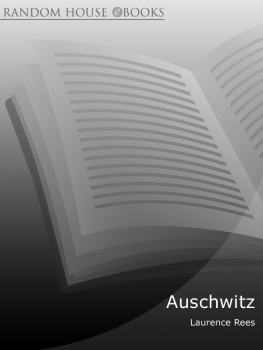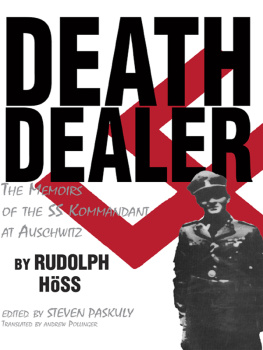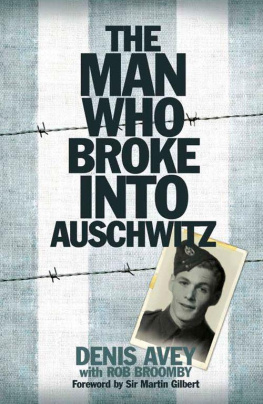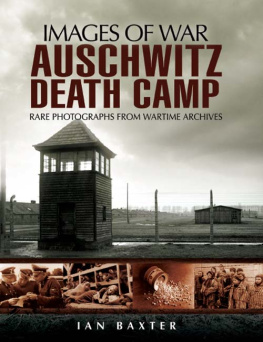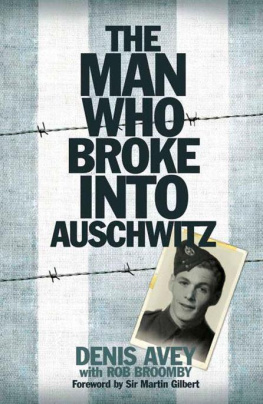
Contents
The original idea for this book came from Norbert Frei, whom I should like to thank for the opportunity to write it as an addendum to our major research project about Auschwitz, completed in 2000. I should also like to thank him for our many conversations and his critical look through the manuscript. Gabriela Gworek supplied me with information on the post-war history of Auschwitz, and Ulrich Nolte and Simon Winder took care of the book on behalf of the publishers. I am also particularly grateful to the three of them. The book is dedicated to my grandmother Johanna Seidl and her brothers and sisters.
She lies by the wall, groaning. The prisoners in the Sonder-kommando, the special unit assigned to pull the corpses apart and empty the gas chambers, find her: a sixteen-year-old girl, covered with dead bodies. They carry her into an adjoining room and wrap her in a coat. No one has ever survived gassing before. On his rounds, an SS Oberscharfhrer notices the group. One of the prisoners pleads for the girls life: once she has regained her strength, please let her pass through the gate and join the other women on the road-building unit. But the guard shakes his head. The girl might talk. He beckons a colleague over. He has no hesitation either. A bullet to the back of the neck.
When the SS man yells at him, Stasio forgets to take off his cap as camp regulations demand. With a blow to the head the Scharfhrer hurls the young Pole to the ground and presses the tip of his boot to his throat until blood flows from his mouth. That evening Stasios comrades carry his corpse back to the camp on a stretcher. The Arbeitseinsatz (labour deployment unit) must always stay complete. There are nineteen living members and one dead one.
When Elisabeth is transferred to the prisoners writing room, her mother is still alive. Her siblings and her father are already dead. She loses thirty relations in Auschwitzs gypsy camp, including her aunt and her five sons and daughters, and another aunt, only two of whose ten children survive. Her mother doesnt survive either; she starves to death.
Numerous accounts and memoirs by prisoners in Auschwitz camp, like these brief summaries, have been passed down to us. They bear witness to the horror of events behind the barbed wire. The testimony of the victims is indispensable for any engagement with the subject of Auschwitz. It is only from their perspective that the scale of the crimes becomes properly apparent.
The history of Auschwitz is complex, and has not hitherto been the subject of a truly comprehensive work. This volume cannot fill that gap. Its aim is to represent the various aspects of the history of the Nazi concentration and extermination camp at Auschwitz in their most important contexts; to draw attention, within the wider perspective of political and social history, to the historical and political space in which the crimes were committed; and to sketch the sub-sequent history of the camp, including both the prosecution and punishment of the crimes after the end of the war, and the activities of Auschwitz deniers right up to the present day.
Auschwitz was the focus of the two main ideological ideas of the Nazi regime: it was the biggest stage for the mass murder of European Jewry, and at the same time a crystallization point of the policy of settlement and Germanization. It was here that extermination and the conquest of Lebensraum (living-space) merged in conceptual, temporal and spatial terms. As a concentration camp, an extermination camp and the hub of forced-labour deployment, Auschwitz embodies all aspects of the Nazi camp system. The connection between the intention to exterminate and industrial exploitation became an immediate reality here. The fact that the city of Auschwitz, influenced by centuries of Jewish tradition, became a German city at the height of the genocide draws our attention to the area beyond the confines of the camp, and raises questions of the public perception of the crimes committed there.
1
The town of Auschwitz
Centuries as a border town
Germans first moved to the area around Owicim in the late thirteenth century. They began a settlement project whose completion almost 700 years later became the impulse for and goal of the Nazis brutal Germanization policy. Owicim, first mentioned in writing in 1178, lay on the dividing line between Slavs and Germans. Its name, derived from the old Polish wity, meaning saint, points towards the towns early adoption of Christianity.
Medieval colonization of the east arose out of the desire on the part of Polands rulers to expand, to enhance Slavic culture through social, legal and economic systems, and thus bolster their power. The acceptance of German law German being less a national than a legal term was a peaceful assimilation process that maintained, respected and promoted Slavic traditions. The settlers introduced German municipal law, because by medieval tradition legal systems were tied to people rather than to territories; they established the laws where they happened to live, and they did just that in Owicim around 1260.
The town at the confluence of the Vistula and the Soa soon became a small trade centre; it was the seat of the court and the capital of the duchy that bore its name. Owicim switched political allegiances many times over the centuries: in 1348 it was incorporated into the Holy Roman Empire, and German became its official language. But with the first medieval agrarian crisis, the German settler movement came to a stop in the middle of the fourteenth century, the Hussite wars brought the colonization of the east to a halt, and under Bohemian rule Czech became Owicims official language. In 1457 the duchy sold for 50,000 silver marks came under the rule of the Polish crown, but temporarily maintained Silesian law before finally becoming a feudal possession of the Polish kings in 1565. When Prussia, Russia and Austria broke up the Polish state in 1772 and Austria annexed the areas between the Biaa in the west and the Zbrucz in the east, including the great trading and cultural centres of Cracow and Lww, the competing powers deployed their troops across the region, and in the same year Owicim passed into Austrian possession. German became the official language once more, the town bore the name Auschwitz, and it was in the new kingdom of Galicia and Lodomeria, within the Habsburg Empire. In the wake of a new revision of the boundaries the second division of Poland in 1793 and the third in 1795 did not affect the town Owicim entered the German Federation after the Vienna Congress in 1815, and remained part of it until the Federation broke up in 1866. The town supported the Habsburgs until the collapse of the monarchy in 1918, and the Emperor bore the title Duke of Auschwitz until the very end.
Catholics and Jews
Attracted by the trade routes leading towards Lww (Lemberg), Cracow, Wrocaw (Breslau) and Zgorzelec (Grlitz), Jews first settled in Upper Silesia in the tenth and eleventh centuries. It may also have been at this time that they moved to Owicim, which lay at the crossroads of the main routes, but their presence is first recorded in 1457. Unlike the surrounding towns, Owicim had no law forbidding Jews to live and trade there. The Catholics did not unleash pogroms or carry out mass executions; they did not force the Jews to live in a ghetto, or drive them out of the city walls. During the first bloody wave of persecution in the modern era, the Chmielnitsky pogrom launched by the Cossacks in 16489, Jews were banished from the neighbouring towns, but in Owicim, perhaps because they were relatively few in number, they were left unmolested.
Next page

